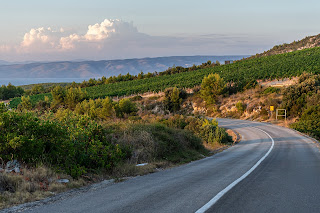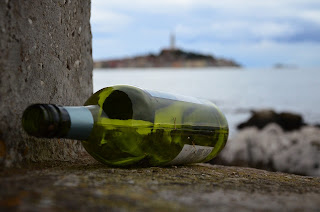Winemaking in Croatia: Between tradition and modernity
Get an online course on winemaking and become an expert of this art!
Croatia is a country known for its beautiful coastline, delicious food, and rich history. But did you know that Croatia is also home to a thriving wine industry? Winemaking has been a part of Croatian culture for thousands of years, and today the country is producing some of the finest wines in Europe. In this article, we'll take a closer look at winemaking in Croatia, its history, and what makes Croatian wine so special.
The History of Winemaking in Croatia
The history of winemaking in Croatia dates back over 2,500 years. The Greeks first introduced winemaking to the region in the 5th century BC, and the Romans continued the tradition after they conquered the area in the 1st century BC. The Roman Emperor Diocletian even had a vineyard in what is now modern-day Split.
During the Middle Ages, winemaking in Croatia was primarily the responsibility of monasteries. The monks were skilled winemakers and often used their vineyards to generate income for their monasteries. Many of the wines produced during this time were sweet and fortified, similar to modern-day port.
In the 19th century, winemaking in Croatia became more commercialized. The development of railroads and improved transportation made it easier for winemakers to transport their wines to other parts of the country and beyond. This led to the establishment of many wineries throughout Croatia, particularly in the regions of Slavonia and Dalmatia.
Get an online course on winemaking and become an expert of this art!
Despite the commercialization of winemaking, many small-scale wineries continued to operate in Croatia. These wineries often produced wine using traditional methods, such as using wooden barrels for fermentation and aging.
During the 20th century, winemaking in Croatia faced many challenges. The two World Wars and the communist regime that followed had a significant impact on the wine industry. Many vineyards were destroyed during the wars, and the communist regime often prioritized quantity over quality when it came to winemaking.
In the 1990s, the Croatian wine industry began to experience a revival. As the country gained independence, winemakers were able to focus on producing high-quality wines that reflected the unique terroir of Croatia.
Today, Croatia has over 300 wineries, and the country is known for its diverse range of indigenous grape varieties. In fact, Croatia has over 130 indigenous grape varieties, making it one of the most diverse wine-producing countries in Europe.
Geographical sketch
Istria
Istria is Croatia's westernmost region, located along the Adriatic Sea. The region is known for its red and white wines, particularly Malvazija and Teran. Malvazija is a white grape variety that produces wines with floral aromas and notes of ripe fruit, while Teran is a red grape variety that produces full-bodied, tannic wines with flavors of black fruit and spice.
Dalmatia
Dalmatia is a region located along Croatia's Adriatic coast. The region is home to several sub-regions, including the islands of Hvar and Vis, as well as the Pelješac Peninsula. Dalmatia is known for its red wines, particularly Plavac Mali and Dingač. Plavac Mali is a red grape variety that is related to Zinfandel and produces wines that are full-bodied and rich, with flavors of black fruit and spice. Dingač is a specific appellation on the Pelješac Peninsula that produces some of the best Plavac Mali wines in Croatia.
Slavonia
Slavonia is a region located in eastern Croatia, bordering Hungary and Serbia. The region is known for its white wines, particularly Graševina. Graševina is a white grape variety that produces wines that are crisp and refreshing, with flavors of citrus and green apple. Slavonia also produces some red wines, including Frankovka and Cabernet Sauvignon.
Central Croatia
Central Croatia is a region located in the middle of the country, encompassing the Zagorje and Prigorje regions. The region is known for its sparkling wines, particularly those made from the Škrlet grape variety. Škrlet is a white grape variety that produces wines with high acidity and flavors of green apple and lemon.
Continental Croatia
Continental Croatia is a region located in the north and east of the country, bordering Slovenia and Hungary. The region is known for its white wines, particularly Riesling and Traminer. Riesling produces wines that are floral and aromatic, with notes of honey and ripe fruit, while Traminer produces wines that are spicy and perfumed, with flavors of lychee and rose petals.
Kvarner
Kvarner is a region located in northern Croatia, along the Adriatic Sea. The region is known for its white wines, particularly Žlahtina. Žlahtina is a white grape variety that produces wines that are crisp and refreshing, with flavors of green apple and citrus.
In addition to these main wine regions, there are also several smaller wine regions in Croatia. These include the Dubrovnik-Neretva region, which is known for its red wines made from Plavac Mali, and the Međimurje region, which produces white and red wines from a variety of grape varieties.
Get an online course on winemaking and become an expert of this art!
Wine Tourism in Croatia
Wine tourism is a growing trend worldwide, and Croatia is no exception. With a long and rich tradition of wine-making, it is no surprise that the country is becoming an increasingly popular destination for wine lovers.
Croatia has a wine-making tradition that dates back to the Roman era, and the country has a diverse range of grape varieties and wine regions. Some of the most famous Croatian wines include Plavac Mali, Teran, Malvazija, and Graševina. These wines are made using traditional methods and often grown on small family-owned vineyards, making them unique and highly sought-after.
One of the most popular wine regions in Croatia is Istria, located in the northern part of the country. This region is known for its red and white wines, as well as its stunning coastal scenery. Wine lovers can visit local vineyards and taste some of the best wines Istria has to offer, while also enjoying the beautiful landscape and exploring the charming towns and villages that dot the region.
Another popular wine region in Croatia is Dalmatia, located along the Adriatic coast. This region is famous for its red wines, particularly those made from the Plavac Mali grape. Visitors to Dalmatia can explore the vineyards and cellars of local winemakers, taste their wines, and learn about the unique techniques and traditions that have been passed down through generations of Croatian winemakers.
Get an online course on winemaking and become an expert of this art!
Wine tourism in Croatia also offers the opportunity to experience the country's rich cultural heritage. Many wineries are located in historic buildings or on ancient sites, and visitors can learn about the history and traditions of Croatian wine-making as they explore these fascinating locations. Wine tours often include visits to local museums and cultural sites, as well as opportunities to try traditional Croatian food and wine pairings.
Croatia is also home to a number of wine festivals and events throughout the year. One of the most famous is the Zagreb Wine Gourmet Weekend, held each May in the capital city. This event brings together winemakers from all over the country, offering visitors the chance to taste a wide range of wines and learn about the latest trends in Croatian wine-making.
Another popular event is the Dubrovnik Wine Festival, held each April in the historic city of Dubrovnik. This festival features local wines and traditional food, as well as live music and cultural performances.
For those looking for a more active wine tourism experience, Croatia also offers a number of outdoor activities, such as cycling and hiking tours that take visitors through the country's most beautiful wine regions. These tours offer the chance to explore the countryside, visit local wineries, and sample some of the best wines Croatia has to offer.
Wine tourism in Croatia is a unique and unforgettable experience. With its rich history, stunning landscapes, and diverse range of grape varieties, Croatia is quickly becoming a must-visit destination for wine lovers around the world. Whether you're interested in learning about the traditional methods and techniques of Croatian wine-making, or simply looking to taste some of the country's finest wines, there is something for everyone in this beautiful and fascinating country.
Get an online course on winemaking and become an expert of this art!
Future of Croatian Winemaking
Conclusion
Winemaking has a long and rich history in Croatia, and the country is producing some of the finest wines in Europe. With over 130 indigenous grape varieties, Croatian winemakers have a unique range of flavors and styles to work with. Whether you're a wine enthusiast or just looking to try something new, Croatian wine is definitely worth exploring. So, the next time you're in Croatia, be sure to visit a winery and discover the delicious wines that this country has to offer.









Comments
Post a Comment